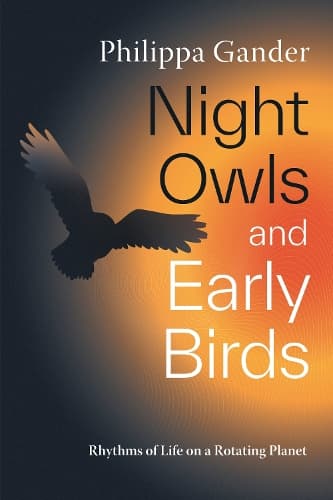Review: Night Owls and Early Birds: Rhythms of Life on a Rotating Planet
Reviewed by David Gadd
If you’re suffering from insomnia, this is the perfect book to read.
Not that it will get you to sleep; on the contrary, it is so packed with tidbits of fascinating science and written in such an accessible, engaging manner that it becomes almost a page turner, encouraging you to continue discovering the odd revelations it delights in.
But it will offer you such profound insights into your body’s rhythms, the whys and history of them, the biology and the impacts, that you will come away with a far greater appreciation of why you’re not sleeping so well. And crucially, a few clues about what to change.
Welcome to the fascinating world of Chronobiology.
Philippa Gander is a professor emeritus at Massey University who has conducted research at Harvard University Medical school and the NASA Ames Research Centre. She was the inaugural director of the Sleep/Wake Research Centre at Massey University. There could be no better expert to guide us on this journey into ourselves.
Gander fills nearly every page with real world examples, involving everything from pond scum to birds to us, and gives us insights into experiments carried out by scientists across the years and in labs around the world. Importantly she manages to hit just the right balance of conveying her bewildering facts, laced with those case studies and the occasional diagram, while maintaining a simple, matter-of-fact approach which ensures this is accessible, readable science.
We all know of circadian rhythms. But what Gander reveals about their workings is frankly startling to the novice to biology. These rhythms are baked deep within the molecules that make up our cells. So that they occur within all cell-based life forms on our planet. We share this most basic feature of our life with blue-green algae – creatures which have DNA but no cell nucleus and have been around for more than 2 billion years. Now there’s a way to extend your view of your family tree.
And while the circadian clock may be familiar, linking us in with the cycle of 24 hour days, there are other rhythmic clocks ticking away in us and other creatures. How about circatidal and circalunar clocks? It may be easy to think of women having a monthly rhythm that links in with a lunar clock, but Gander cites “intriguing evidence” from experiments to prepare for space flight to Mars that men too have monthly cycles of hormones coming from adrenal glands.
Then there are circannual clocks which link organisms into the yearly orbit of the earth around the sun and the changing of seasons. Again it is easy to think of an example such as hibernation, but Gander is relentless in demonstrating these clocks are buried deep within us - in the case of circannual, she says the master clock seems to reside in “pacemaker cells” in the pituitary gland – and the influence can be subtle and far reaching. She tells us research indicates that the functioning of the brain in young people has been shown to vary seasonally. Parents take note.
What you come away with from Night Owls is a deeper understanding of the interrelation of our bodies and our environment – how light, temperature, food and a myriad of other factors can trigger chemical changes inside our cells, influencing us in ways we don’t actively control with our minds.
Given the tendency we have to place our mind and will as the most defining aspect of ourselves, that is a healthy, maybe humbling, reminder that we are just organisms like all other creatures on the planet and some things, some impulses, some biological facts, are bigger than us as individuals.
And though we have modified our living environments like no other species, as Gander points out in many examples, living with bright light, particularly with the blue light emitted by much of our technology, shielding ourselves from the seasons and the seasonality of food, has consequences. If you’ve ever worked shifts, you know it can play havoc with your body. Now you have a technical term, circadian desynchrony, and repeated desynchrony can raise your risk of disease and ill health. But even without shift work, your lifestyle can be at odds with your body and the way it wants – needs – to naturally function. One of those consequences may be your trouble sleeping. Time to pick up this book and have a read.
Reviewed by David Gadd
